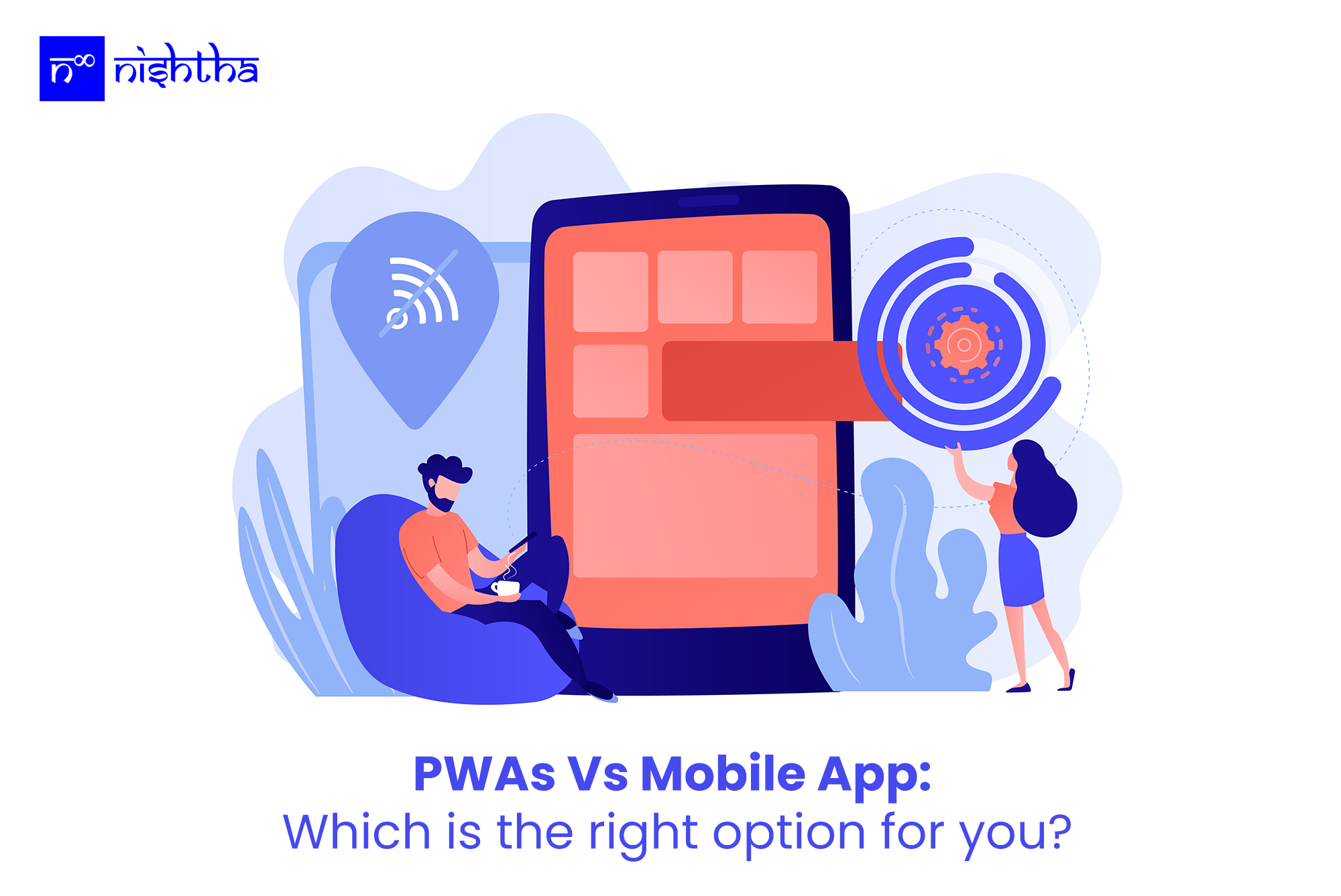Introduction
Businesses are always faced with key decisions at every point in their operational as well as pre-operational life. These decisions are dictated by the business goals, target customer, target geographies, operational model, product proposition, etc. So it is no surprise that in the present environment where businesses are more and more reliant on advancements in technology, that the decision-makers are faced with a myriad of technological options that adds to the conundrum. One of the key decisions facing these decision-makers is whether to opt for a conventional Mobile Application or for a Progressive Web Application (PWA). This decision is more significant for certain types of businesses compared to others, e.g. B2C Retail. The correct decision may define the success of business operations in the short term, especially where they are starting their Digital journey.
PWAs
PWAs or Progressive Web Applications are brilliant and also a cost-effective alternative to full-fledged Mobile Application development for businesses. PWAs can work with existing websites and can be deployed through the existing web browsers. All the users have to do is access the website through a compatible browser (e.g. Chrome, Edge, Firefox, etc.), for both desktop and mobile devices. The users can have an option to “Add to Home Screen”. This will install a mobile application-like interface inside their devices by adding an icon inside their app directory and the users can use it just like a native application. Depending on the version of the operating system that the device uses, the website may either be added to the Apps List or the Home Screen.
Advantages of PWAs
- No application development phase for mobile platforms which means no review cycle for the applications inside the app stores
- A fraction of on-device storage is used compared to a native app.
- Since it is accessed from a web-browser, users can discover and have access to the content much faster than a native app.
- It is optimized for search engines.
- Google particularly values PWAs. This means PWAs are more likely to come up on the first page of the search results than a standard website with no PWA functionality.
Disadvantages of PWA
- PWAs are not yet perfectly supported by all browsers.
- Since they are built as a web application, all features may not be accessible as compared to native applications.
- Monetization is a huge problem with PWA, i.e. it is not suitable for applications that charge for downloads
Mobile Applications
A mobile application is as it sounds, purpose-built for the device it targets. An application if targeted for different operating systems, has to be developed as many times as the number of operating systems it targets. For example, if the requirement is to target both Android and iOS users, the application needs to be developed for both platforms. However, there are various solutions to create cross-platform applications from a single code base nowadays so mobile applications are not lagging far behind in pursuing development efficiency.
Advantages of Mobile Applications
- Mobile applications are built for your phone’s operating system or platform. Since they do not communicate as a website, they are much more secure and reliable in terms of communicating information.
- The user experience is smoother as it is tailor-made for the device.
- Mobile applications can communicate with other applications, e.g. sharing information between applications.
Disadvantages of Mobile Applications
- Substantial cost and long development cycle: Since mobile applications are built differently compared to websites, each application has to be optimised for the operating system (OS) it targets. This makes development more costly thereby increasing time to launch the product.
- Application Store reviews: Every mobile application needs to pass a review stage for their respective application store. Sometimes reviews take a lot of time and this adds to the time taken to launch. This period is completely out of the developer’s control.
- There is an additional cost to obtain developer accounts to be able to publish applications on iOS and Google Play App Store.
- Update cycle: Pushing updates as fast as we want can be a challenge for mobile applications. It sometimes takes days to reach the majority of devices in which the application is installed. There are alternatives to expedite this process but it still lags behind the update cycle of a website in comparison.
Conclusion
In summary, both PWAs and Mobile Applications have their own utility. Their suitability and optimal usage depends on the use case. Needless to say, each use case is unique to the user’s needs. It is worth noting here, that user’s needs are dynamic, e.g. the needs of an organisation at the start of its life-cycle will be very different one or two years down the line as it seeks to position for growth.
Contact Us
In order to find out more about how we can help you with your Digital Strategy, please feel free to contact the Nishtha Digital team for a no-obligation free discussion at your convenience.



Hi! This is kind of off topic but I need some advice from an established blog.
Is it hard to set up your own blog? I’m not very techincal but I can figure things out pretty fast.
I’m thinking about making my own but I’m not sure where to begin. Do you have any ideas or suggestions?
Appreciate it
Hello
Please feel free to submit your query specifying what is it that you are looking to achieve and we shall try to help you.
Regards
Team Nishtha